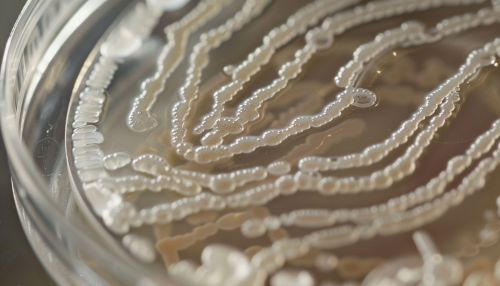Anaerobic organism
Introduction
Anaerobic organisms are life forms that do not require oxygen for growth. They can either react negatively or even die if oxygen is present. This term is often used to describe a group of microorganisms, as some species can tolerate or even require environments that lack oxygen.
Classification
Anaerobic organisms can be classified into three types: obligate anaerobes, aerotolerant organisms, and facultative anaerobes.
Obligate Anaerobes
Obligate anaerobes are poisoned by oxygen, so they gather at the bottom of the tube where the oxygen concentration is lowest. They can only live and grow in an environment where there is no oxygen. In the presence of oxygen, obligate anaerobes produce a variety of substances that are toxic to them, such as superoxide radical (O2-) and hydrogen peroxide (H2O2).
Aerotolerant Organisms
Aerotolerant organisms do not use oxygen and are not poisoned by it. They are indifferent to the presence of oxygen in the environment. They can be found evenly spread throughout the test tube, not caring about the oxygen concentration.
Facultative Anaerobes
Facultative anaerobes can make ATP by aerobic respiration if oxygen is present but are capable of switching to fermentation or anaerobic respiration if oxygen is absent. An example of a facultative anaerobe is the yeast Saccharomyces cerevisiae, which can ferment sugar into alcohol in the absence of oxygen but uses aerobic respiration when oxygen is present.
Metabolism
Anaerobic organisms use an anaerobic respiration process. This process does not involve oxygen consumption. Instead, it uses a respiratory electron transport chain but does not use oxygen as the electron acceptors. Instead, molecules such as sulfate (SO42-), nitrate (NO3-), or sulfur (S) are used.


Anaerobic Organisms in Human Health
Anaerobic bacteria can cause diseases in humans, including tetanus, gangrene, and bacterial vaginosis. Clostridium perfringens, an obligate anaerobe, is one of many species of bacteria that produce toxins that cause gas gangrene. Clostridium difficile, another obligate anaerobe, is responsible for severe diarrhea and other intestinal disease when competing bacteria in the gut flora are killed by antibiotics.
Anaerobic Organisms in the Environment
Anaerobic organisms have a variety of roles in the environment. In soil, anaerobic bacteria play a crucial role in the nitrogen cycle, converting nitrates into nitrogen gas. In aquatic environments, anaerobic bacteria break down organic material and release methane gas, which can be used as a renewable energy source.
